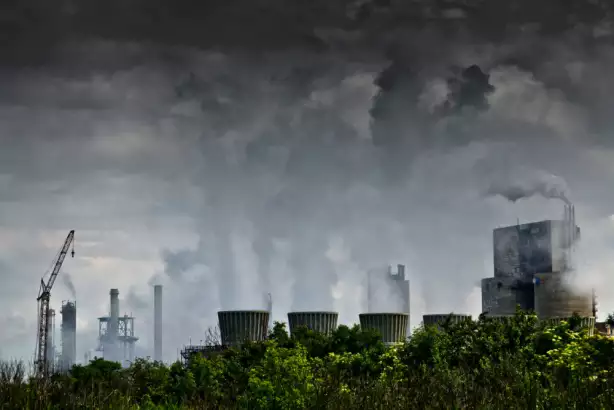What are the components of an RTO for air pollution control?
Introduction
Regenerative Thermal Oxidizers (RTOs) are widely used in air pollution control systems. These systems are designed to efficiently remove harmful pollutants from industrial exhaust gases before they are released into the atmosphere. RTOs consist of several key components that work together to achieve this goal. In this article, we will explore the different components of an RTO and their functions in controlling air pollution.
1. Combustion Chamber
The combustion chamber is the heart of an RTO. It is where the oxidation process takes place, converting the pollutants into less harmful substances through high-temperature combustion. The chamber is equipped with burners that supply the necessary heat to raise the temperature to the required level. The design of the combustion chamber ensures optimal mixing of the pollutants with the combustion air, promoting efficient destruction of the contaminants.
2. Heat Exchange Beds
Heat exchange beds are essential for the energy efficiency of an RTO. These beds are packed with a heat transfer medium, such as ceramic media or metallic honeycombs, that can absorb and store heat efficiently. The exhaust gases from the combustion chamber pass through one bed, transferring their heat to the medium. The preheated medium then releases the stored heat to the incoming exhaust gases from the process stream, reducing the overall energy consumption of the system.
3. Valves and Dampers
Valves and dampers play a crucial role in controlling the flow of gases within an RTO. They ensure that the exhaust gases are directed through the correct paths, allowing for efficient heat transfer and pollutant destruction. By strategically opening and closing these valves and dampers, the system can optimize its performance and adapt to varying operating conditions.
4. PLC and Control System
A Programmable Logic Controller (PLC) and a control system are responsible for monitoring and regulating the various components of an RTO. The PLC continuously collects data from sensors throughout the system and uses this information to control the operation of valves, dampers, and burners. It ensures that the RTO operates within the desired parameters, maximizing its efficiency and effectiveness in air pollution control.
5. Exhaust Stack
The exhaust stack is the final component of an RTO. It is responsible for safely releasing the treated gases into the atmosphere. The stack is designed to meet regulatory requirements regarding emission standards and dispersion of pollutants. It may also include additional equipment, such as silencers, to mitigate noise pollution generated by the system.
Conclusion
Regenerative Thermal Oxidizers are complex systems that rely on the integration of multiple components to effectively control air pollution. The combustion chamber, heat exchange beds, valves and dampers, PLC and control system, and exhaust stack all play vital roles in ensuring the efficient removal of pollutants from industrial exhaust gases. By understanding these components and their functions, we can appreciate the engineering and design behind RTOs and their contributions to environmental sustainability.
 RTO for air pollution control” />
RTO for air pollution control” />

Company Introduction
We are a high-tech manufacturing enterprise specializing in comprehensive treatment of volatile organic compounds (VOCs) exhaust and carbon reduction energy-saving technology. Our core technologies include thermal energy, combustion, sealing, and self-control. We have the capabilities for temperature field simulation, air flow field simulation modeling, ceramic heat storage material performance, molecular sieve adsorbent material selection, and high-temperature incineration oxidation testing of VOCs organic compounds.
Team Advantages
We have RTO technology research and development center and exhaust gas carbon reduction engineering technology center in Xi’an, as well as a 30,000 square meter production base in Yangling. We are a leading manufacturer of RTO equipment and molecular sieve wheel equipment in terms of production and sales volume globally. Our core technical team comes from the Aerospace Liquid Rocket Engine Research Institute (Aerospace No. 6 Institute). Currently, we have more than 360 employees, including over 60 R&D technical backbone members, among which there are 3 senior engineers at the researcher level, 6 senior engineers, and 47 thermodynamics doctorates.
Core Products
Our core products are the Rotary Valve Regenerative Thermal Oxidizer (RTO) and molecular sieve adsorption concentration wheel. Combined with our expertise in environmental protection and thermal energy system engineering, we can provide customers with comprehensive solutions for industrial exhaust gas treatment, carbon reduction, and thermal energy utilization under various operating conditions.

Certifications, Patents, and Honors
- Intellectual Property Management System Certification
- Quality Management System Certification
- Environmental Management System Certification
- Construction Industry Enterprise Qualification
- High-tech Enterprise
- Patent for Rotary Valve Regenerative Thermal Oxidizer
- Patent for Rotary Heat Storage Incineration Equipment
- Patent for Disc Molecular Sieve Wheel
Choosing the Right RTO Equipment

- Determine the characteristics of the exhaust gas
- Understand the local regulations and emission standards
- Evaluate energy efficiency
- Consider operation and maintenance
- Budget and cost analysis
- Select the appropriate RTO type
- Consider environmental and safety factors
- Performance testing and verification
RTO Air Pollution Control Service Process
- Preliminary consultation, on-site inspection, and requirements analysis
- Solution design, simulation, and review
- Custom production, quality control, and factory testing
- On-site installation, commissioning, and training services
- Regular maintenance, technical support, and spare parts supply
We are a one-stop solution for RTO air pollution control, offering customized RTO solutions tailored to our customers’ needs. Our professional team provides comprehensive services throughout the entire process.
Author: Miya
